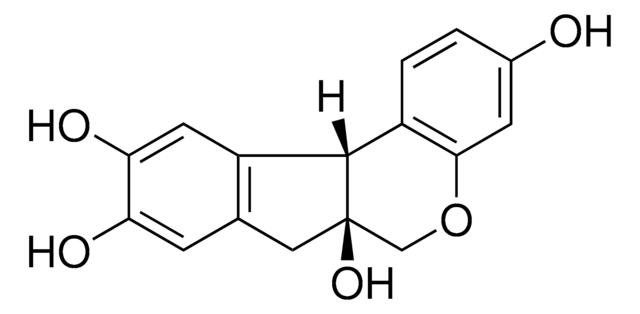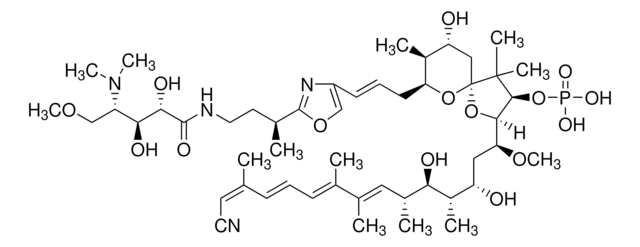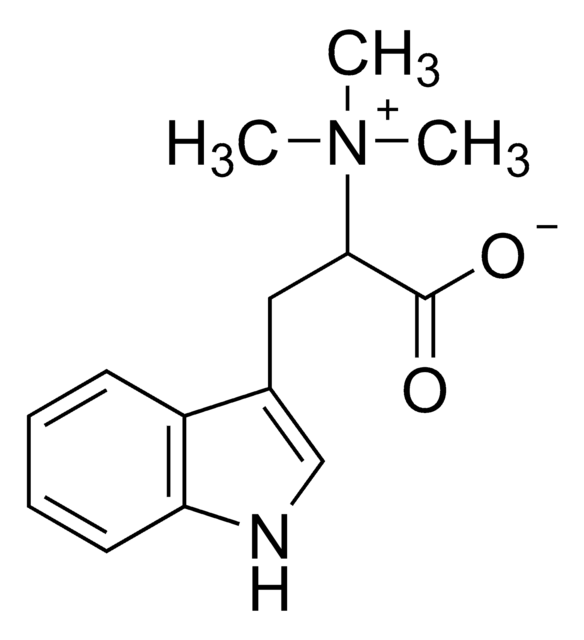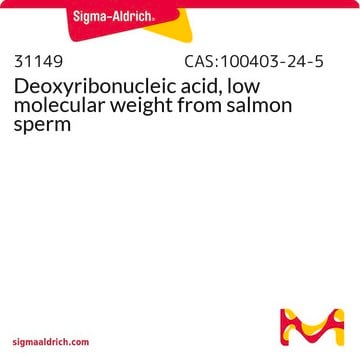F4425
Fostriecin sodium salt from Streptomyces pulveraceus
≥98% (HPLC)
About This Item
Recommended Products
biological source
Streptomyces sp. (Streptomyces pulveraceous)
Quality Level
Assay
≥98% (HPLC)
form
solid
solubility
ethanol: soluble
methanol: soluble
water: soluble
storage temp.
−20°C
SMILES string
[Na+].C[C@@](O)(\C=C\[C@H]1CC=CC(=O)O1)[C@@H](C[C@@H](O)\C=C/C=C\C=C\CO)OP(O)([O-])=O
InChI
1S/C19H27O9P.Na/c1-19(23,12-11-16-9-7-10-18(22)27-16)17(28-29(24,25)26)14-15(21)8-5-3-2-4-6-13-20;/h2-8,10-12,15-17,20-21,23H,9,13-14H2,1H3,(H2,24,25,26);/q;+1/p-1/b3-2-,6-4+,8-5-,12-11+;/t15-,16+,17+,19+;/m0./s1
InChI key
XBUIKNRVGYFSHL-IAVQPKKASA-M
Application
Biochem/physiol Actions
Features and Benefits
Packaging
Storage Class Code
11 - Combustible Solids
WGK
WGK 3
Flash Point(F)
Not applicable
Flash Point(C)
Not applicable
Personal Protective Equipment
Certificates of Analysis (COA)
Search for Certificates of Analysis (COA) by entering the products Lot/Batch Number. Lot and Batch Numbers can be found on a product’s label following the words ‘Lot’ or ‘Batch’.
Already Own This Product?
Find documentation for the products that you have recently purchased in the Document Library.
Our team of scientists has experience in all areas of research including Life Science, Material Science, Chemical Synthesis, Chromatography, Analytical and many others.
Contact Technical Service








